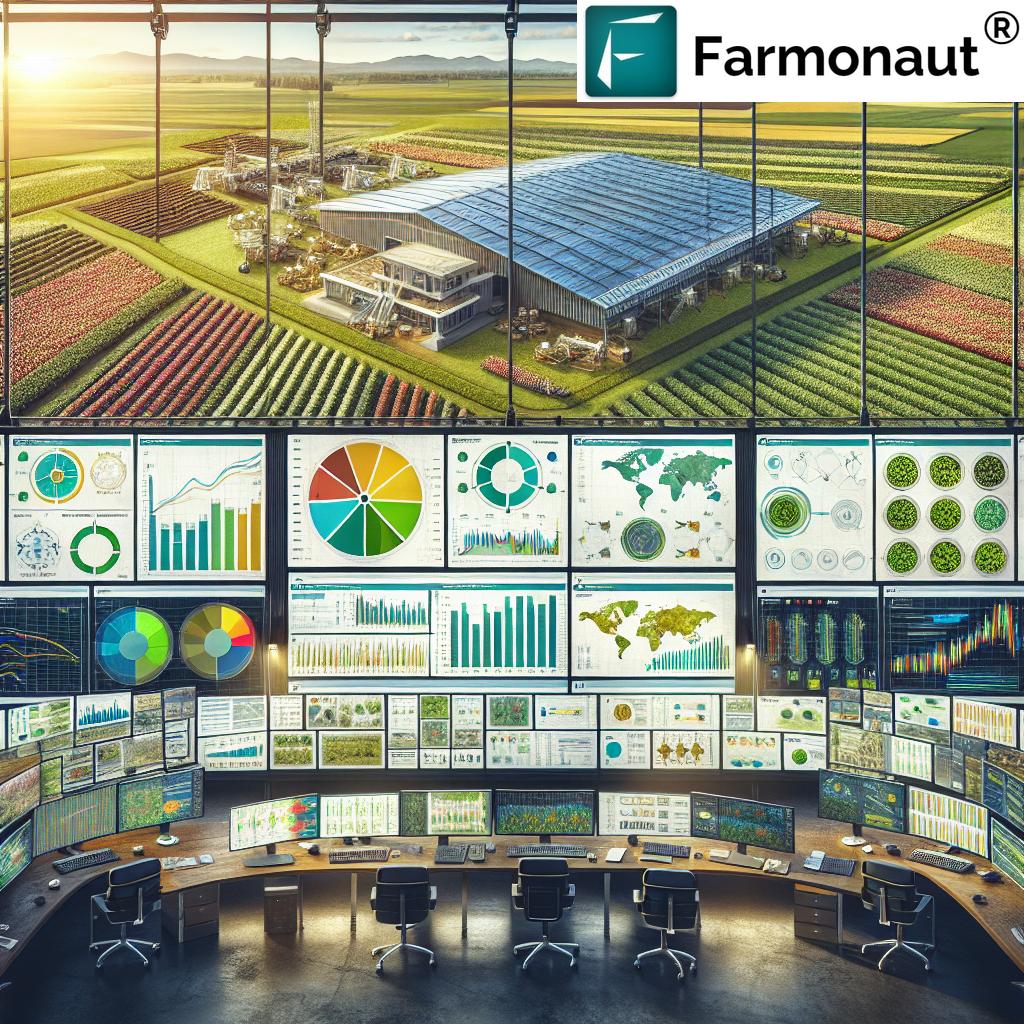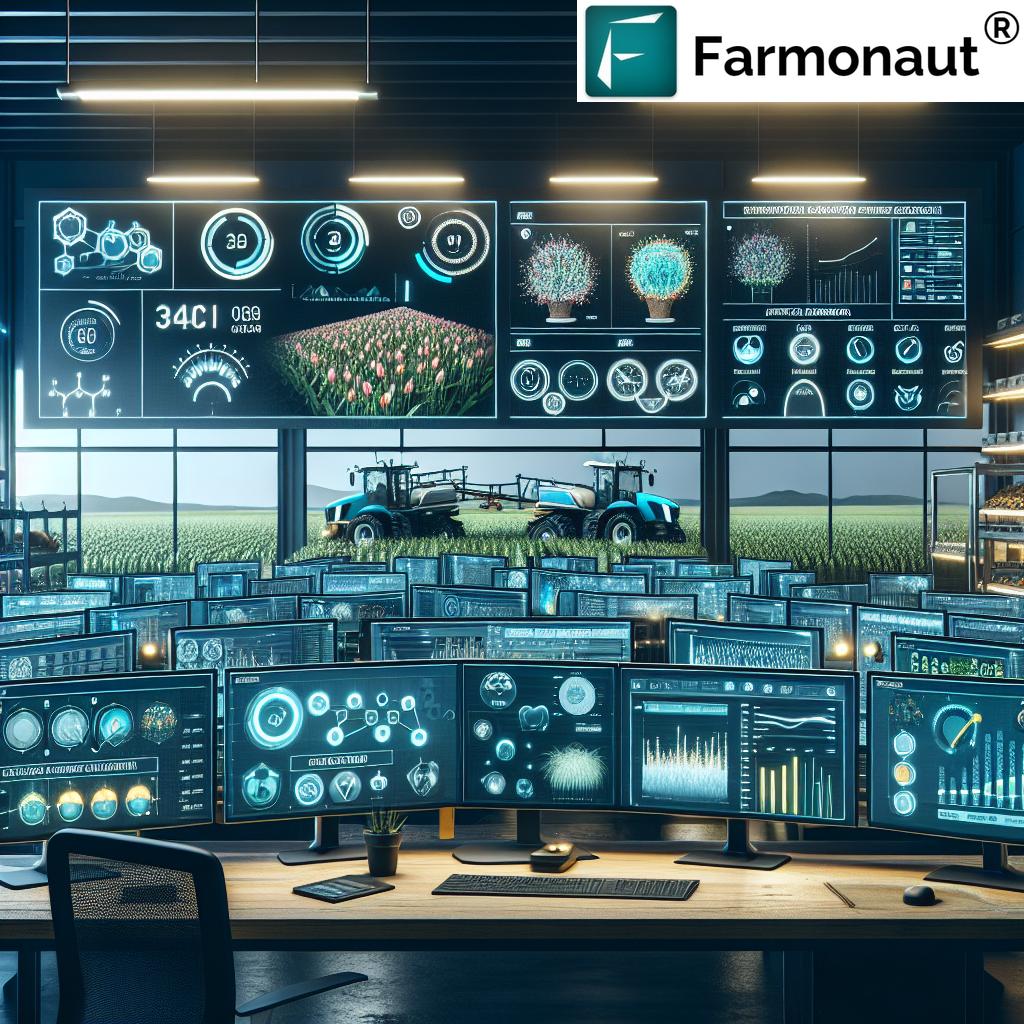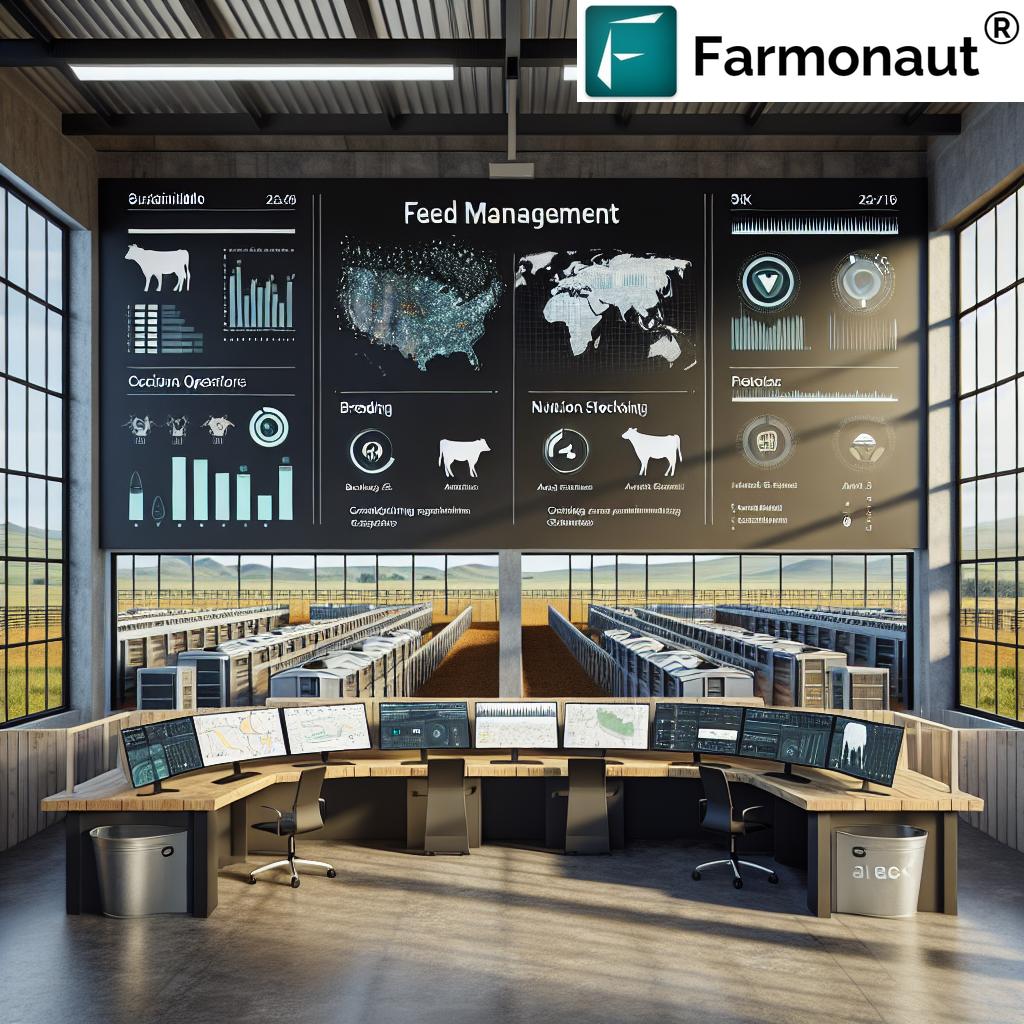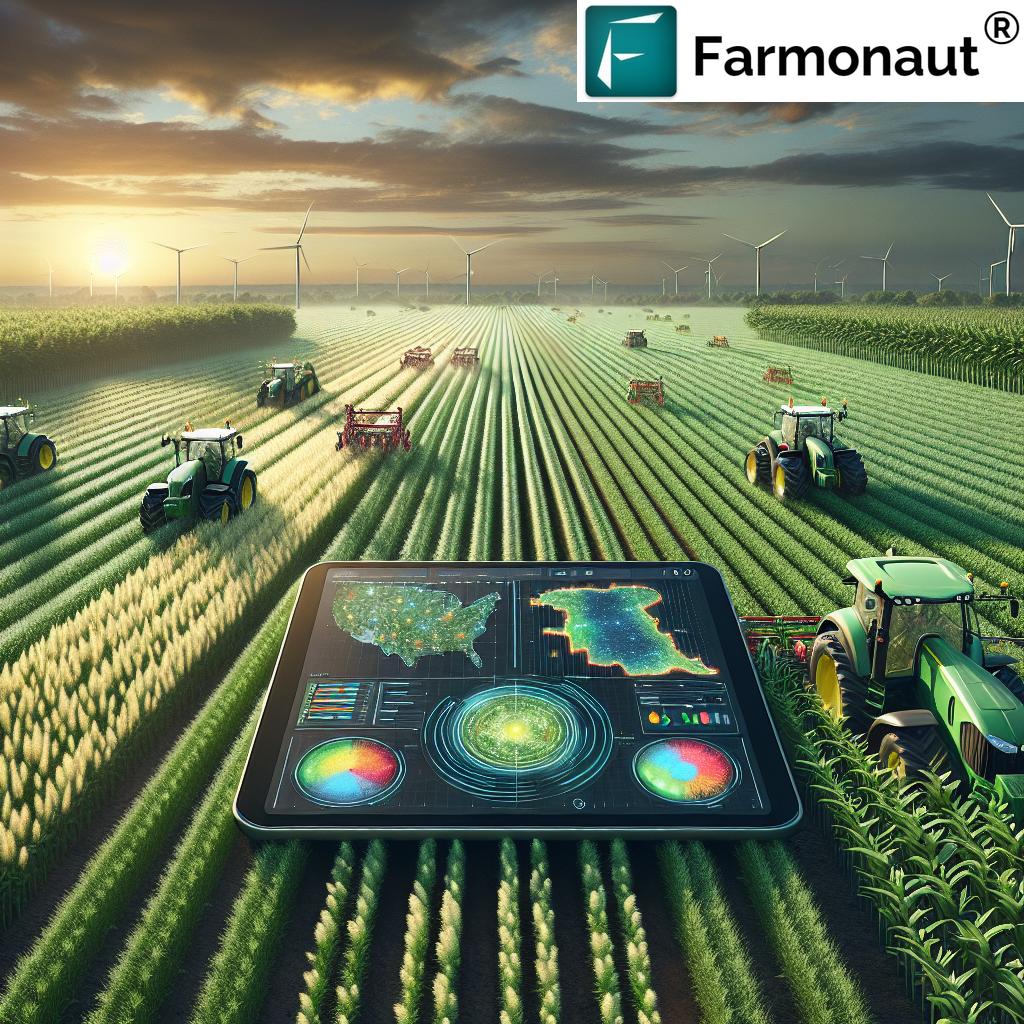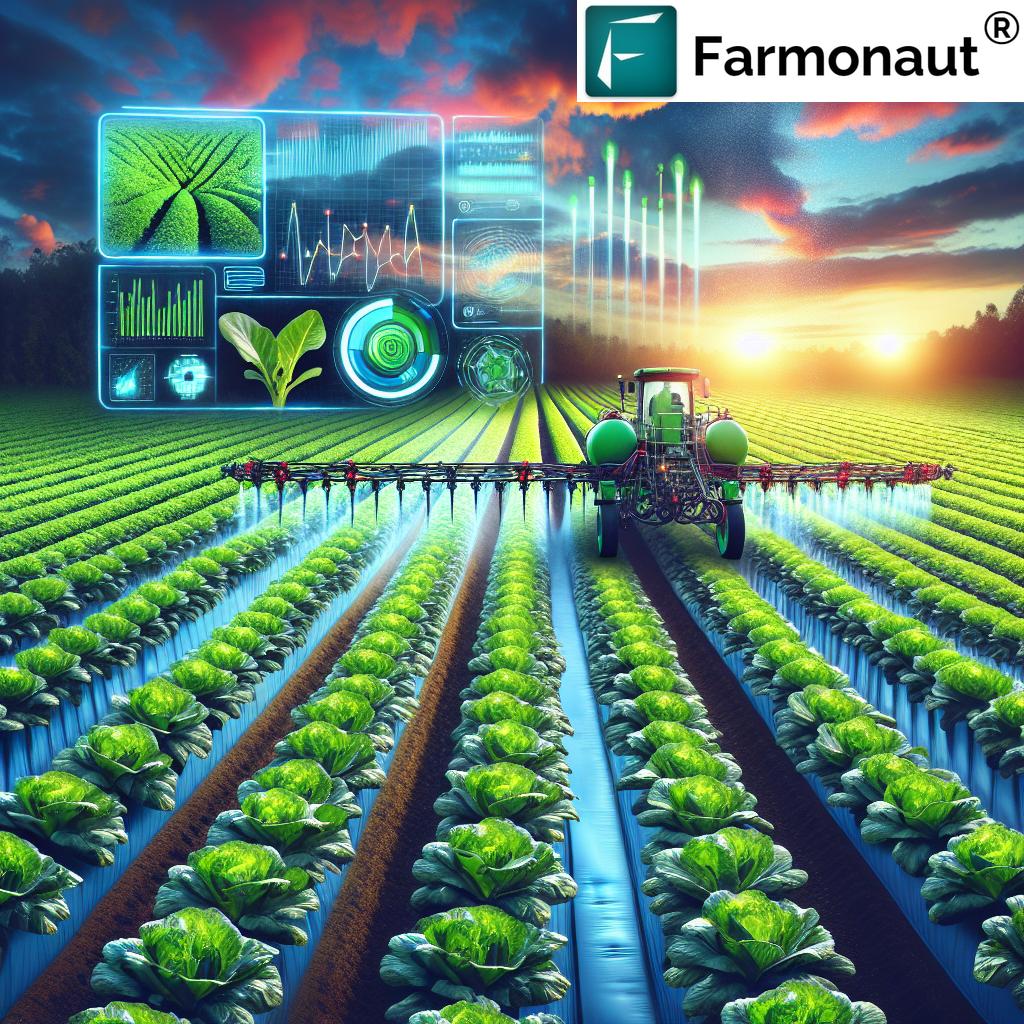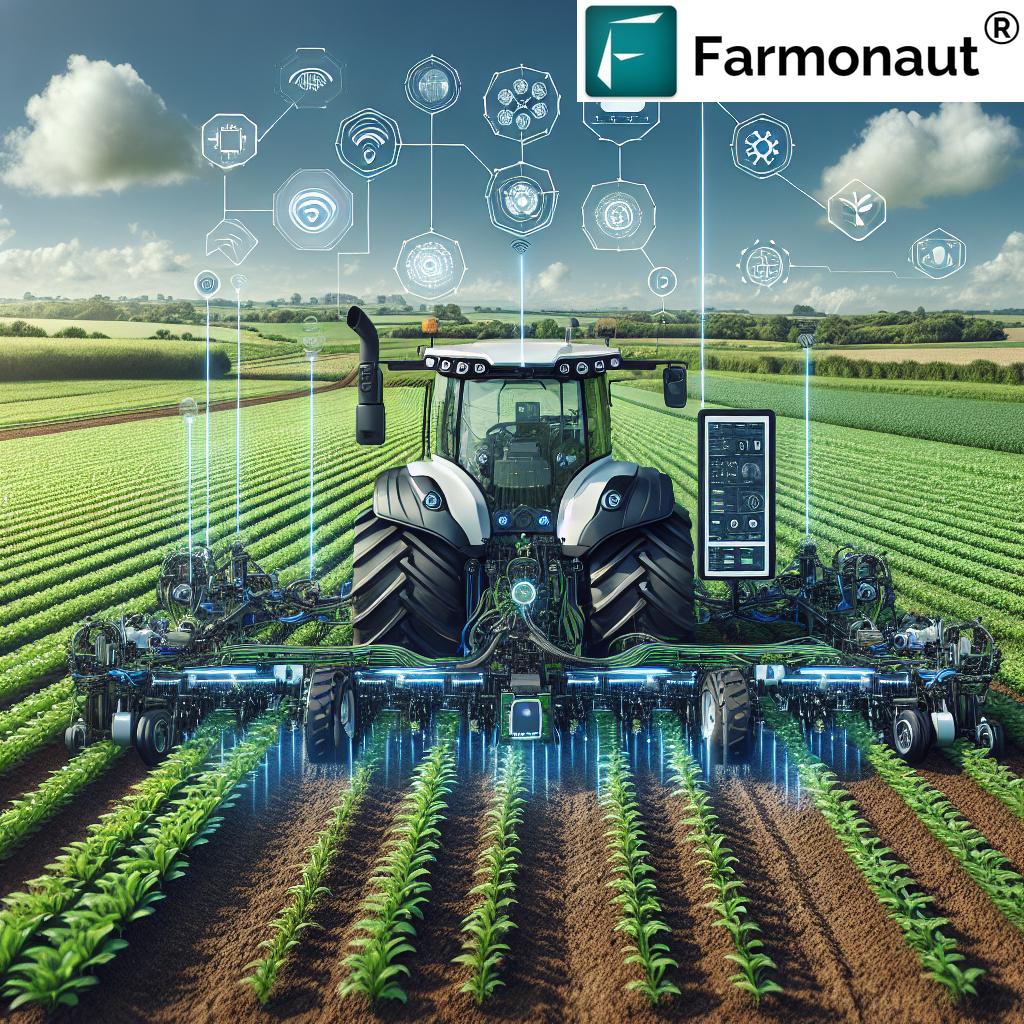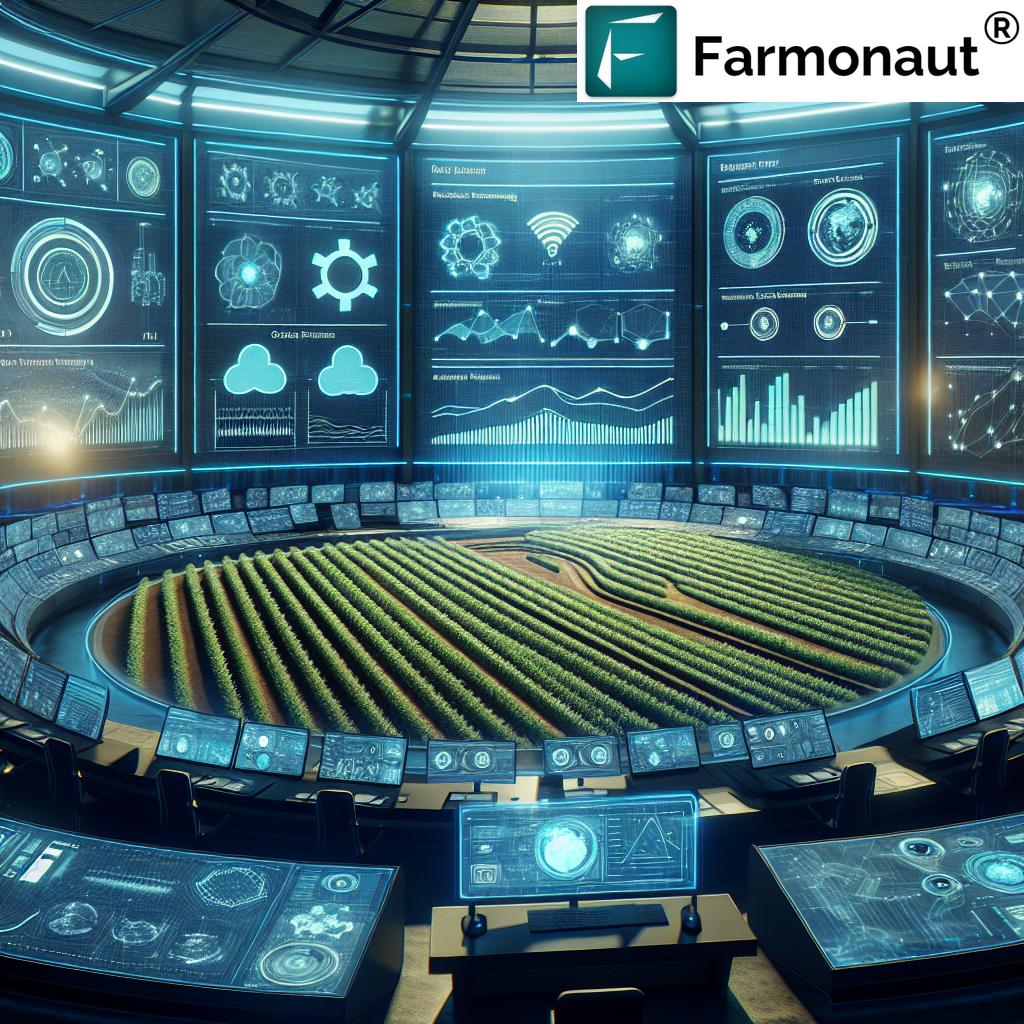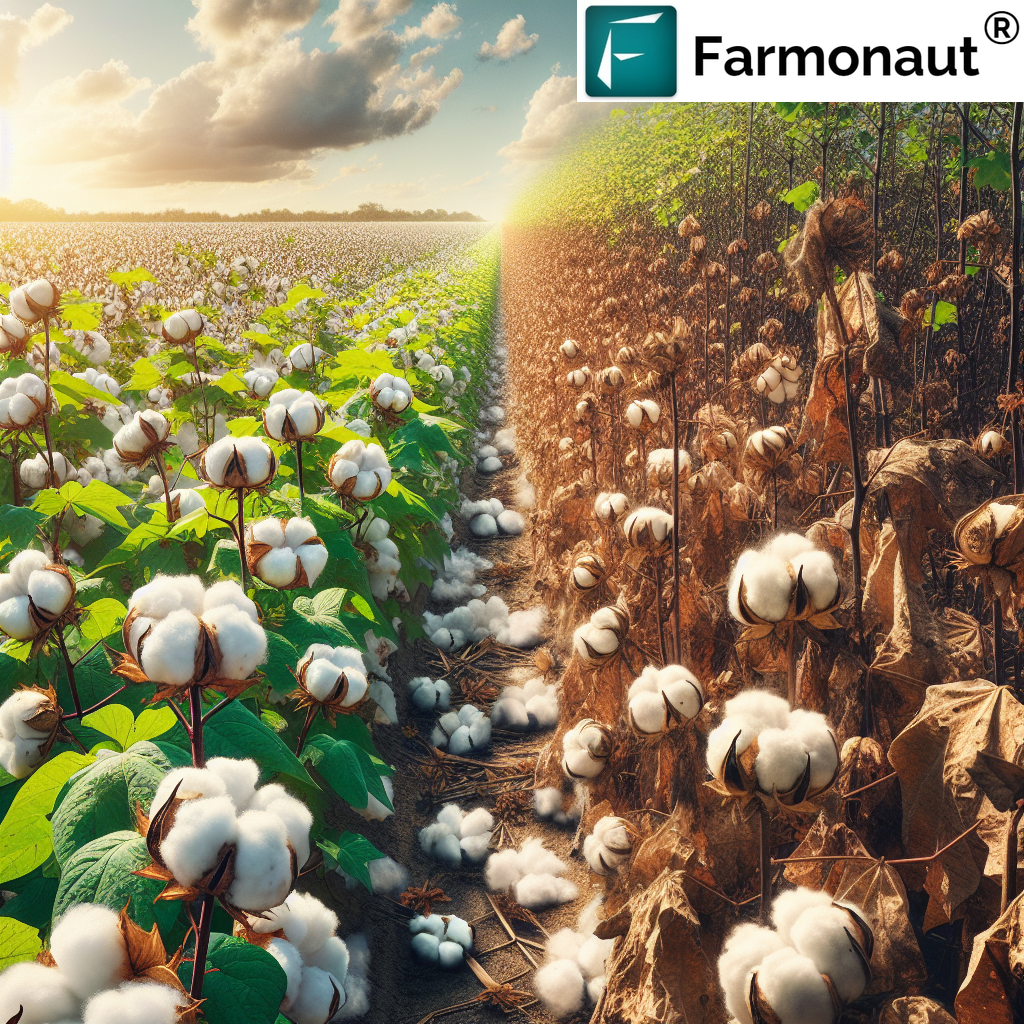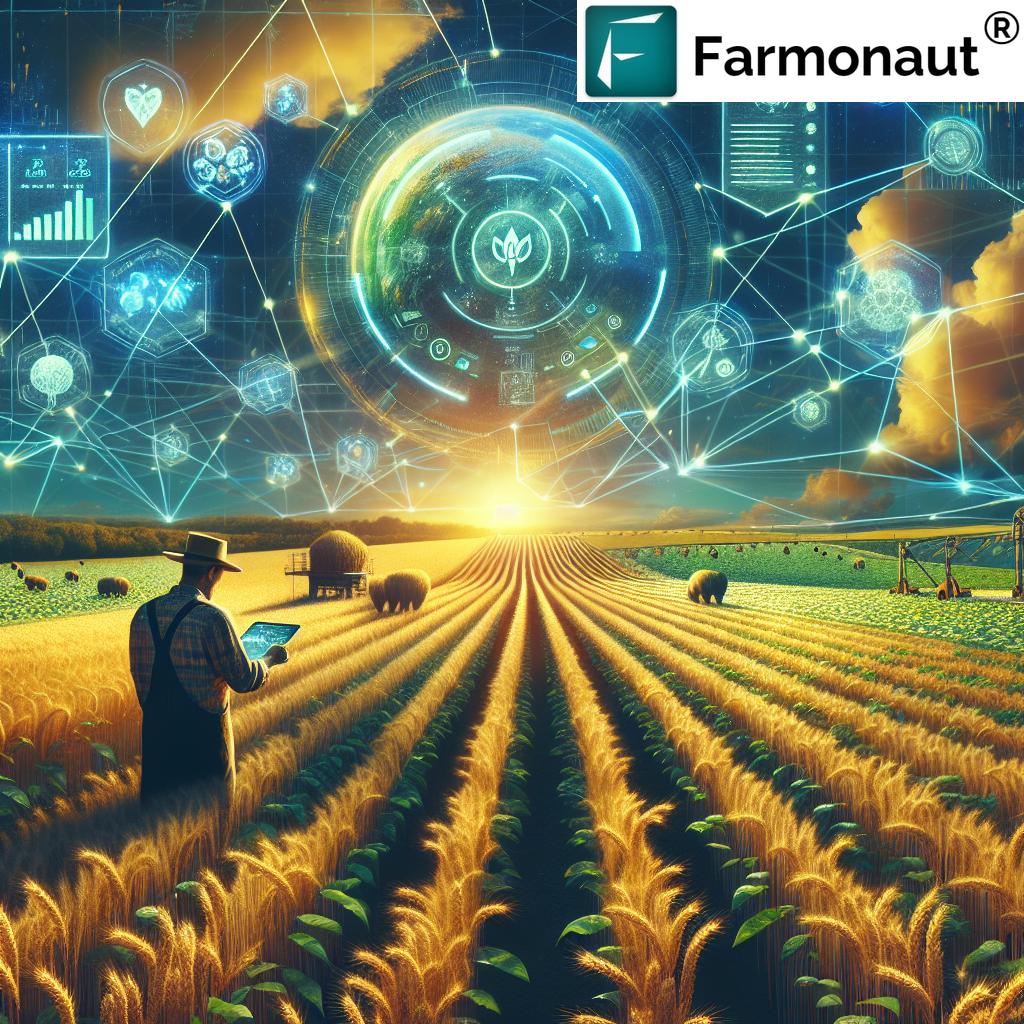Solutions for Agribusiness Monitoring: 7 Top Technologies
“Precision agriculture technologies can increase crop yields by up to 20% through data-driven farm management.”
Table of Contents
- Introduction
- Comparative Table: Agribusiness Monitoring Technologies
- 1. Precision Agriculture Technologies
- 2. Farm Management Software
- 3. Equipment and Fleet Management
- 4. Data Analytics and Decision Support
- 5. Remote Monitoring and IoT Integration
- 6. Artificial Intelligence and Machine Learning
- 7. Satellite and Remote Sensing
- 8. Regulatory Compliance and Risk Management
- Farmonaut Apps & API Access
- Farmonaut Subscription Plans
- Frequently Asked Questions
- Conclusion
Introduction: Why Agribusiness Monitoring Matters
The landscape of agriculture is transforming rapidly through innovative monitoring solutions and precision agriculture technologies. As agribusinesses seek to optimize crop management, enhance yield, and achieve sustainability, the adoption of advanced systems, remote sensing, and automated tools has become paramount. Crop monitoring solutions now provide actionable insights into soil, water, crop health, equipment performance, environmental parameters, and much more—ushering in an era of smarter and more sustainable farm management.
In this comprehensive guide, we’ll explore the seven top agribusiness monitoring technologies driving operational excellence, resource efficiency, and risk reduction for farmers and producers worldwide. From precision farming systems and AI-driven data analytics to our own satellite crop monitoring platform at Farmonaut, this review will show how leveraging state-of-the-art tools can unlock higher yields, operational agility, and a more secure future for agriculture.
“Satellite-based crop monitoring covers over 300 million hectares globally, revolutionizing large-scale agribusiness oversight.”
Comparative Table: Agribusiness Monitoring Technologies
| Technology Name | Application Area | Key Benefits | Estimated Cost Savings (%) | Estimated Yield Improvement (%) | Sustainability Impact | Technology Readiness Level |
|---|---|---|---|---|---|---|
| Precision Agriculture Technologies | Soil, irrigation, drone surveying, pest detection | Field-level optimization, real-time crop health, water/chemical reduction | 15–30% | 10–20% | Reduced water/fertilizer/pesticide use | High |
| Farm Management Software | Planning, data analytics, resource allocation | Centralized decisions, record keeping, predictive planning | 10–20% | 8–15% | Improved traceability, efficient resource use | High |
| Equipment & Fleet Management | Machinery tracking, maintenance, fuel optimization | Reduced downtime, maintenance automation, cost control | 12–18% | 6–12% | Lower emissions, fuel savings | High |
| Data Analytics & Decision Support | Big data, forecasting, dashboards | Yield prediction, risk mitigation, advanced reporting | 8–15% | 7–10% | Targeted input reduction, informed strategy | High |
| Remote Monitoring & IoT Integration | Connected sensors, automation, livestock monitoring | Real-time alerts, scalable oversight, labor reduction | 10–22% | 8–15% | Energy and input savings, less waste | Medium—High |
| AI and Machine Learning | Predictive analytics, pest/disease detection | Timely interventions, automated decisions, labor savings | 12–25% | 10–18% | Reduced chemical usage, early action | Medium—High |
| Satellite & Remote Sensing | Large-scale field monitoring, yield prediction | Early stress detection, coverage at scale, risk reduction | 15–30% | 12–22% | Widespread monitoring, resource optimization | High |
1. Precision Agriculture Technologies: The Foundation of Smarter Crops
Precision agriculture technologies represent a revolutionary approach to farm management by integrating sensors, automated devices, and real-time analysis. These techniques are designed to monitor field variability, enable targeted resource application, and promote operational efficiency, resulting in optimal yield and sustainability.
Key Components of Precision Agriculture Technologies
- Soil Moisture Sensors: Monitor and measure soil water levels to ensure optimal irrigation and prevent overwatering, thereby conserving water and preventing disease outbreaks linked to excess moisture.
- Crop Health Sensors: Detect diseases, pests, and nutrient deficiencies by analyzing plant health parameters, allowing for targeted interventions and better yield predictions.
- Automated Irrigation Controllers: Use weather and soil data to regulate watering practices, ensuring efficient resource use and reducing energy costs.
- Smart Pest Control Devices: Leverage sensors to detect pests in real time, deploying targeted methods and reducing overall pesticide usage.
- Drones & UAVs: Provide aerial insights through remote crop monitoring, helping to assess field conditions, nutrient status, and predict yields over large areas efficiently.
By integrating these crop monitoring solutions, farms gain precise control over inputs, mitigate risk, and bolster environmental stewardship. For those seeking hardware-free, large-scale crop health and moisture monitoring, our satellite crop monitoring technology offers remotely delivered insights for optimal decision-making.
2. Farm Management Software: Centralizing Data and Decisions
Farm management software has emerged as one of the most valuable tools in managing complex agricultural operations. These platforms offer a centralized system to track and analyze every aspect of the farm, easing the integration of data-driven decisions into daily workflows.
Features of Leading Farm Management Software
- Crop Monitoring: Track growth cycles, monitor crop health, and predict yields using historical and real-time data.
- Resource Management: Optimize usage of water, fertilizers, and chemicals with automated analysis and alerts for efficient field operations.
- Weather Integration: Incorporate localized weather forecasts for planning, risk assessment, and timely farm interventions.
- Analytics & Reporting: Generate custom dashboards to support future strategies, regulatory compliance, and operational reviews.
With modern farm management software, managers can apply agriculture data analytics for smarter resource allocation, streamlined compliance, and increased productivity. Such centralized applications ensure every step in the food production chain is documented and optimized.
3. Equipment and Fleet Management in Agriculture: Maximizing Machinery Performance
Efficient utilization and management of machinery is crucial for maximizing yield and minimizing operational costs. Equipment and fleet management in agriculture incorporates asset tracking, telematics, and automated maintenance scheduling to ensure machinery is always operating at its peak.
Key Aspects
- GPS-Based Asset Tracking: Real-time tracking of tractor and harvester location, status, and work hours, reducing misuse and ensuring safety.
- Maintenance Scheduling: Automated alerts for service, ensuring timely repairs and reducing downtime.
- Telematics Monitoring: Collects data on fuel usage, performance, and operator behavior, optimizing efficiency and reducing environmental impact.
These systems help agribusinesses gain greater control over their fleets, reduce risks, and save on operational expenses. By integrating fleet management tools such as those offered on our Farmonaut Fleet Management page, producers automate vehicle tracking, logistic planning, and maintenance workflows for seamless operations.
4. Agriculture Data Analytics and Decision Support: Actionable Insights at Scale
Modern agriculture produces a massive volume of data from various sensors, platforms, and connected devices. Agriculture data analytics and decision-support tools transform this raw information into actionable insights that optimize farm management, crop yields, and sustainability.
How Analytics Drive Sustainable Agribusiness
- Big Data Integration: Unifies datasets from equipment, IoT sensors, weather feeds, supply systems, and more for holistic analysis.
- Machine Learning Models: Harness AI and machine learning to forecast yields, detect disease outbreaks, and analyze market trends.
- Custom Dashboards: Visualize performance, compliance, and risk metrics for easy, informed decision-making.
The advantages of embedding analytics in farm operations include improved planning, earlier warning of pest or disease outbreaks, and efficient allocation of all resources. For scalable, data-driven crop management and field monitoring, our satellite-based documentation and risk assessment for insurance and crop loans enhance transparency and reduce fraud.
5. IoT in Farming: Remote Monitoring and Integration
The Internet of Things (IoT) in farming connects a diverse set of sensors and automated systems, delivering real-time monitoring and control across every aspect of agriculture. These solutions facilitate remote observation and management of soil moisture, climate conditions, crop health, and livestock health, thus enhancing operational agility.
Key IoT-Driven Applications
- Environmental Sensors: Monitor soil parameters, water quality, and weather patterns for proactive resource management.
- Automated Systems: IoT devices control irrigation, feeding, and greenhouse climate through real-time feedback loops.
- Livestock Tracking: Wearable tracking and health devices for fundamenal livestock management.
With IoT in farming, farmers and agribusinesses can minimize inputs, reduce waste, and act swiftly in response to environmental changes, making farms more responsive and resilient. Our carbon footprinting services further support sustainable agriculture by enabling real-time monitoring of emissions and sustainability reporting, ensuring compliance and improving reputation.
6. AI in Agriculture: Intelligence for Modern Farm Management
AI in agriculture is reshaping how we monitor, predict, and respond to crop health risks. From disease detection to yield forecasts, machine learning algorithms and artificial intelligence enable truly data-driven, real-time precision interventions.
Examples of AI-Powered Crop Monitoring Solutions
- Pest and Disease Detection: Image recognition algorithms process data from traps, sensors, or satellite images to detect infestations early and trigger alerts.
- Predictive Analytics: Machine learning models use historical weather, field, and rainfall records to predict outbreaks and inform spraying or treatment schedules.
- Automated Decision-Making: AI adjusts irrigation cycles, nutrient applications, and pesticide doses autonomously to maximize performance and safety.
Artificial intelligence fundamentally enhances precision farming and crop monitoring solutions, reducing labor costs and manual intervention while boosting efficiency and sustainability. Our Jeevn AI Advisory system at Farmonaut, for instance, analyzes satellite data and weather forecasts to deliver real-time, personalized crop management advice to farmers, tailored to their unique field conditions.
7. Satellite Crop Monitoring and Agricultural Remote Sensing
Satellite crop monitoring and agricultural remote sensing have revolutionized large-scale field management by providing timely and actionable insights unattainable by ground surveys. At Farmonaut, we harness these cutting-edge technologies to drive transformation in agribusiness operations globally.
Benefits of Satellite Crop Monitoring
- Remote & Scalable Monitoring: Satellites cover massive tracts of land, so farmers and ag-managers can monitor crops across continents from their phone or computer.
- Stress & Disease Detection: Multispectral imagery identifies early signs of drought, infestation, or nutrient deficiencies before symptoms are visible to the naked eye.
- Yield Prediction: High-resolution remote sensing provides accurate estimates of potential yields for planning and market strategy.
- Land Use & Environmental Impact Analysis: Monitor land cover changes, compliance with sustainability guidelines, and overall environmental footprint.
Our Farmonaut platform allows users to access satellite crop monitoring and real-time resource management tools via Android, iOS, browser apps, or API—helping farmers of all sizes leverage advanced insights for better outcomes.
8. Agricultural Risk Management & Regulatory Compliance
Managing regulatory compliance and minimizing operational risks are as vital as maximizing crop yield. Modern monitoring platforms automate risk assessment and documentation across the farm, supply chain, and distribution networks.
Key Features in Agricultural Risk Management
- Documentation Management: Digital systems centralize all certificates, logs, and compliance records for easy retrieval and regulatory oversight.
- Process Automation: Automated workflows eliminate administrative errors, streamline tasks, and reduce time spent on paperwork.
- Risk Assessment: Monitor environmental, climate, and regulatory risks to prevent non-compliance and financial loss.
Our traceability solution leverages blockchain to ensure every step in the supply chain can be verified, thereby strengthening regulatory compliance, boosting consumer trust, and enabling transparent documentation.
“Satellite-based crop monitoring covers over 300 million hectares globally, revolutionizing large-scale agribusiness oversight.”
Farmonaut Apps & API Access
At Farmonaut, we are committed to making precision agriculture affordable and accessible to everyone—from smallholder farmers to institutional agri-enterprises and governments. Our solutions are delivered via intuitive Android, iOS, browser-based web app, and robust API for developers. Whether you’re looking to monitor crop health remotely, manage your operations more efficiently, or enable satellite-based documentation for loans and insurance, our technology empowers you—anywhere, any time.
Farmonaut Subscription Plans
Choose from flexible subscription models tailored for individual farms, cooperatives, large agribusinesses, or government needs—enabling you to monitor hectares at a schedule that fits your operations and budget.
Frequently Asked Questions
Q1: What is the most effective technology for remote crop monitoring?
Satellite crop monitoring solutions stand out for their ability to cover vast areas with minimal labor. These systems provide near real-time updates on crop health, water stress, and pest outbreaks, making them highly efficient and scalable for agribusinesses managing multiple locations.
Q2: How can precision agriculture technologies reduce costs?
By leveraging sensors, data analytics, and automated control systems, precision agriculture technologies enable targeted application of water, fertilizer, and pesticides. This precise management lowers input costs by up to 30% while sustaining or improving yields.
Q3: Is AI replacing human management on farms?
No. AI in agriculture is designed to augment the expertise of farmers and managers by delivering real-time insights and automating routine tasks. It helps with timely interventions, risk management, and decision support, but expert human oversight remains essential.
Q4: How does Farmonaut promote sustainable agriculture?
We offer features such as carbon footprinting and resource optimization tools that help users monitor, reduce, and report on environmental impact. Our platform supports smarter usage of all agricultural inputs, aiding compliance and long-term sustainability.
Q5: Who can benefit from these technologies?
Individual farmers, cooperatives, agribusinesses of all sizes, governments, and financial institutions can benefit by leveraging these multi-faceted solutions—achieving better farm productivity, risk reduction, and improved profits.
Conclusion: The Future of Agribusiness Monitoring Is Now
The integration of advanced crop monitoring solutions, precision agriculture technologies, and smart farm management tools is radically transforming the future of agriculture. By embracing satellite crop monitoring, AI, IoT, and data analytics, farmers and agribusinesses can achieve remarkable gains in efficiency, sustainability, yield, and profitability. The journey does not end with acquisition; continued learning and adaptation of these solutions—as championed by platforms like Farmonaut—will define the next era of food security, climate resilience, and sustainable growth across every corner of our planet.
Begin your transformation with our Farmonaut platform, and experience the value of actionable insights, anywhere and anytime. The next generation of agriculture is data-driven, and it starts with robust monitoring, innovative technology, and a commitment to excellence.


